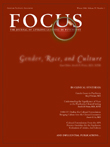Depression: An Update for the Clinician
Clinical context
Epidemiology update
Diagnosis
Comorbidity
Pathophysiology
Treatment strategies and evidence
Antidepressants
Psychotherapies
Long-term treatment
Questions and controversies
Risk and benefit of antidepressants Among pediatric patients
An update on treatment-resistant depression
Augmentation
Combination
Switching
STAR*D
Conclusions
| 1. Depressed mood |
| 2. Markedly diminished interest or pleasure |
| 3. Significant weight loss or weight gain, or decrease or increase in appetite |
| 4. Insomnia or hypersomnia |
| 5. Psychomotor agitation or retardation |
| 6. Fatigue or loss of energy |
| 7. Feelings of worthlessness or excessive or inappropriate guilt |
| 8. Diminished ability to think or concentrate, or indecisiveness |
| 9. Recurrent thoughts of death, suicidal ideation, or a suicide attempt |
| Psychological |
| Irritability |
| Anxiety or nervousness |
| Reduced libido |
| Hypersensitivity to rejection or criticism |
| Perfectionism or obsessiveness |
| Indecisiveness |
| Preoccupation with oneself |
| Behavioral |
| Crying spells |
| Interpersonal friction or confrontation |
| Anger attacks or outbursts |
| Avoidance of anxiety-provoking situations |
| Reduced productivity |
| Social withdrawal |
| Avoidance of emotional and sexual intimacy |
| Reduced leisure-time activities |
| Development of rituals or compulsions |
| Workaholic behaviors |
| Substance use or abuse |
| Self-sacrifice or victimization |
| Self-cutting/mutilation |
| Violent or assaultive behaviors |
| Physical |
| Sexual arousal difficulties |
| Erectile dysfunction |
| Delayed orgasm or inability to achieve orgasm |
| Pains and aches |
| Headaches |
| Muscle tension |
| Gastrointestinal upset |
| Heart palpitations |
| Burning or tingling sensations |
| Major depressive disorder |
| Dysthymic disorder |
| Minor depressive disorder |
| Recurrent brief depressive disorder |
| Mixed anxiety-depressive disorder |
Footnotes
References
Information & Authors
Information
Published In
History
Authors
Metrics & Citations
Metrics
Citations
Export Citations
If you have the appropriate software installed, you can download article citation data to the citation manager of your choice. Simply select your manager software from the list below and click Download.
For more information or tips please see 'Downloading to a citation manager' in the Help menu.
View Options
View options
PDF/EPUB
View PDF/EPUBGet Access
Login options
Already a subscriber? Access your subscription through your login credentials or your institution for full access to this article.
Personal login Institutional Login Open Athens loginNot a subscriber?
PsychiatryOnline subscription options offer access to the DSM-5-TR® library, books, journals, CME, and patient resources. This all-in-one virtual library provides psychiatrists and mental health professionals with key resources for diagnosis, treatment, research, and professional development.
Need more help? PsychiatryOnline Customer Service may be reached by emailing [email protected] or by calling 800-368-5777 (in the U.S.) or 703-907-7322 (outside the U.S.).

